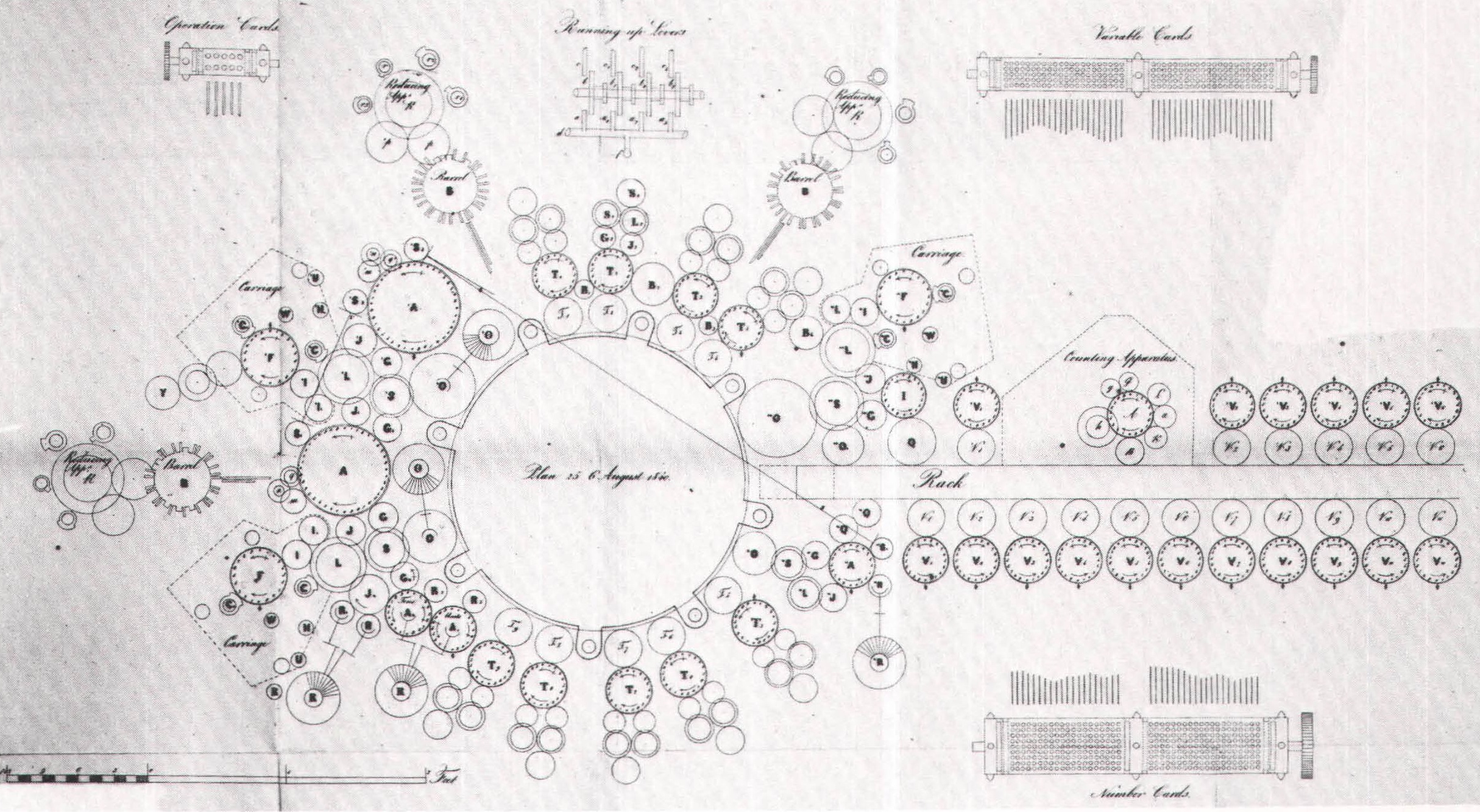If the Difference Engine had been built it would have stood ten feet high, ten feet wide, and five feet deep, and weighed about two tons. Internally, it would have consisted of seven main vertical axles. Six of those axles represented an order of difference, the seventh the value of the function being computed. Each of the axles held twenty wheels, or gears, since the engine could process twenty-digit numbers or, in special circumstances, be readjusted to use thirty-digit numbers. There were two sets of vertical axles behind the main ones, one for carrying or borrowing tens from one main axle to the next and another for engaging or disengaging the carrying axles. (If any of the gears fell out of place, a system of springs and pins forced it back into position, or, if the misalignment was bad enough, brought the apparatus to a halt.)
While the engine was designed chiefly to calculate constant progressions, it could also compute nonconstant ones like logs, in which the differences are exponential. In such cases, it calculated by approximation, employing a set of differences that applied to one series of logs and then figuring out the answers to the twentieth digit – but only printing out seven. Then it came to a stop, ringing a bell to notify the operator to enter a new set of differences. Obviously, this process was painfully slow and cumbersome, but it was preferable to pen-reckoning. Finally, the engine printed out results via a stamping mechanism attached to the seventh axle (which stored the result), producing negative molds that could be converted into positive printing plates.
